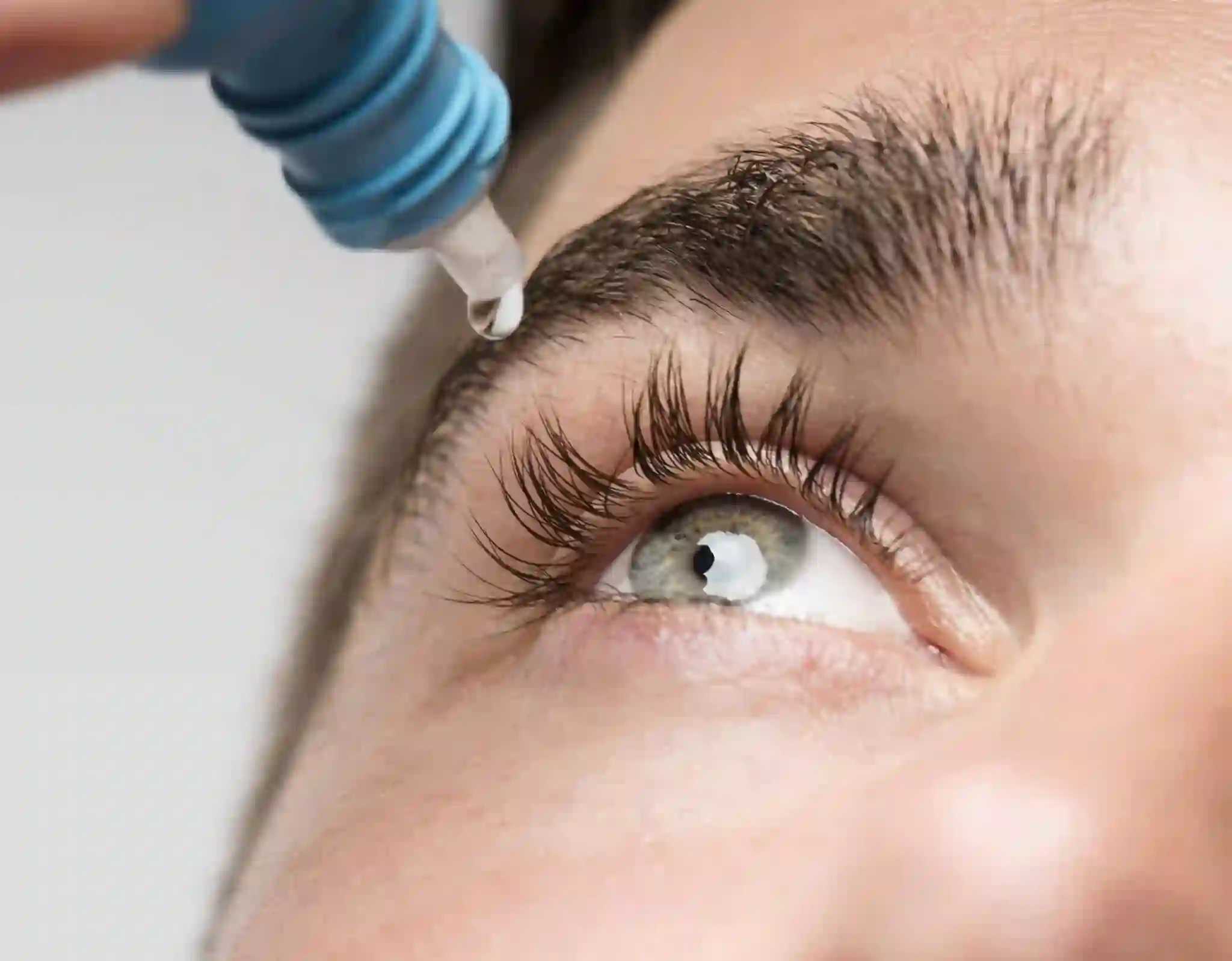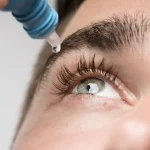In a world, especially post-pandemic, where our daily lives have got surrounded by screens and at the same time, environmental factors are continuously evolving, the health of our eyes is degrading with every passing day. One common yet often overlooked condition is dry eye syndrome. It is the discomfort of dry, irritated eyes that can significantly impact our overall well-being and productivity.
This blog aims to shed light on the intricate world of dry eye symptoms & dry eye causes. So, join us on this journey to understand the intricacies of dry eye syndrome and discover simplest ways to keep our eyes vibrant, healthy, and ready for the challenges of the digital world.
What Is Dry Eye?
Dry eyes, or dry eye syndrome, is an eye condition characterized by an inadequate quantity or poor quality of tears to lubricate the eyes. Tears play a crucial role in maintaining the health of the eyes, not only by providing lubrication to the eyes but also by washing away debris and protecting against infections.
When the eyes fail to produce enough tears, people experience discomfort. This discomfort possesses dry eye syndrome symptoms, like persistent dryness, a gritty or sandy sensation, redness, itching, burning, sensitivity to light, and occasional blurred vision. Factors contributing to dry eyes are dry or windy weather, lifestyle choices such as excessive screen time, aging, certain medications. Understanding dry eyes symptoms, dry eye causes, and treatment of dry eyes is to enhance the overall quality of eye health.
Symptoms of Dry Eye
In this section of the blog, we’ll explore the noticeable dry eye symptoms, providing a clear understanding of the indicators that indicate this prevalent condition.
Persistent Dryness and Discomfort:
Individuals suffering from dry eyes often experience a sense of dryness and discomfort. It feels as if there’s a persistent foreign object in the eye, making routine tasks like reading or working on a computer challenging.
Burning or Itching Sensation:
Another symptom of dry eye syndrome is a feeling of burning or itching sensation. This discomfort can escalate and lead to irritation and noticeable redness in the eyes.
Sensitivity to Light (Photophobia):
Dry eyes lead to sensitivity to light, known as photophobia. Exposure to bright lights can cause discomfort and trigger additional dry eye symptoms.
Blurred Vision:
Temporary blurred vision is a common consequence of dry eyes. The lack of sufficient lubrication degrades the clarity of eyesight, impacting daily activities such as driving or reading.
Excessive Tearing:
Like a compensatory mechanism, dry eyes can prompt excessive tearing. In this condition, overflow of tears occur in an attempt to alleviate dryness.
Identifying these indicators is the first step towards effective management and prevention. Whether it’s recognizing the gritty sensation or blurred vision, understanding these dry eye syndrome symptoms let individuals find timely care and adopt lifestyle changes for improved eye health.
Causes of Dry Eye
In this section, we’ll talk about what causes dry eyes. There are multiple reasons and factors that can cause dry eyes. Understanding these dry eye causes is essential for implementing effective preventive measures and targeted treatments.
Inadequate Tear Production:
Tear production is a complex process involving a delicate balance of water, oil, and mucus. In cases where there is insufficient tear production, the eyes lack the necessary moisture to remain adequately lubricated.
Poor Tear Quality:
It doesn’t matter if there is adequate tear production, even poor tear quality can result in dry eyes. This condition arises when tears lack the appropriate combination of oil, water, and mucus.
Environmental Factors:
External elements do play a significant role in dry eye development. Exposure to wind, smoke, and air can cause tear evaporation, leaving the eyes dry and irritated.
Age-related Changes:
Aging is a natural factor contributing to dry eyes. With growing age, individuals may experience a reduction in tear production and alterations in tear composition and become more susceptible to dry eye syndrome.
Environmental triggers, lifestyle preferences, aging, and many other medical conditions collectively contribute to the cause of dry eye syndrome. Recognizing these causative factors enable individuals to take essential steps in preventing or curing the ailment.
What are the Risk Factors for Dry Eyes
There are certain conditions and lifestyle elements that can heighten an individual’s susceptibility to developing dry eyes. In this section, we will talk about those risk factors with an aim to empower you with the knowledge that can help you make informed eye care decisions.
Extended Screen Time:
In the digital age, prolonged screen time is a prevalent risk factor for dry eyes. The reduced frequency of blinking during extended device usage time period contributes to insufficient lubrication.
Contact Lens Wear:
Contact lens wearers are prone to dry eyes due to factors such as reduced oxygen flow to the cornea and irritation from the materials in contact lenses.
Medications:
Various medications and antidepressants can have dry eyes as a side effect. It’s essential to be aware of the potential ocular effects of prescribed medications.
Recognizing these factors aid individuals to take essential measures for eye health. By staying informed, one can significantly reduce the impact of these risk factors, fostering comfort and vitality in their eyes.
How to Prevent Dry Eyes
Navigating through the landscape of dry eyes, now we’ll discuss the effective measures on how to prevent dry eyes. From simple lifestyle adjustments to targeted eye care practices, we will explore different ways to minimize the risk of developing dry eyes.
Blink Regularly:
Practice regular blinking, especially during extended screen use. It is crucial for promoting natural lubrication as well as spreading tears evenly across the surface of the eyes.
Use Humidifiers:
Indoor environments with low humidity can elevate the dry eyes, particularly during the winter season. Using humidifiers can add moisture to the air, preventing excessive evaporation of tears.
Follow the 20-20-20 Rule:
Following the 20-20-20 rule while using the screen provides relief to the eyes. All you have to do is that every 20 minutes, take a break and focus on an object at least 20 feet away for at least 20 seconds to reduce eye strain.
Stay Hydrated:
Adequate hydration is important for eye health. Drinking an ample amount of water supports tear production and maintains the necessary moisture balance in the eyes.
From incorporating regular breaks during screen time to maintaining proper eye hygiene and staying well-hydrated, these preventive measures can make a substantial difference in minimizing the risk of dry eye syndrome.
Diagnosis of Dry Eyes
Ophthalmologists can perform several tests as a routine eye exam to determine the cause or whether you have dry eye syndrome and, if so, whether it has damaged the epithelial layer protecting the cornea.
General Eye Exam:
A comprehensive eye exam is performed to examine the complete history of your eye health and thus diagnose the cause of your dry eyes.
Tear Quality Test:
Special dyes in eye drops are used to determine the condition of your eye surface. The ophthalmologist looks for the staining patterns on the corneas and measures how long it takes before your tears evaporate.
Schirmer Test:
This test is performed to measure the volume of tear production. In it, both eyes are done numb and strips are placed under both eyelids. After 5-10 minutes, the ophthalmologist measures the moisture level based on the result and if it is less than a certain amount, then the individual is suffering from dry eye.
Osmolarity Test:
Another test that is performed to measure the concentration and composition of various particles as well as water level in the eyes. If there are dry eyes, the water level will be low.
After performing desired diagnostic tests, your ophthalmologist will determine the severity of the syndrome. Based on it, he/she will suggest the best preventive measure or treatment to cure dry eyes.
When to Visit the Doctor
If dry eye symptoms persist despite adopting preventive measures, finding the best ophthalmologists becomes very crucial. The conditions that need immediate medical attention are:
Severe Eye Pain:
Severe eye pain is not a basic symptom of dry eyes and could indicate an underlying serious issue that requires urgent attention.
Sudden Changes in Vision:
Any sudden changes in vision, such as sudden blurred or distorted vision should not be ignored as these changes may signify that the issue needs to be checked immediately.
Eye Infections:
Dry eye symptoms like redness, swelling, discharge, or persistent irritation may indicate an eye infection that necessitates medical intervention. Delaying treatment for eye infections can lead to complications.
Be sure to visit your ophthalmologist regularly so that he/she can promptly monitor your condition and provide you with the best treatment.
Conclusion:
In conclusion, understanding the multifaceted nature of dry eye is paramount for individuals seeking to manage and alleviate its impact on daily life. From recognizing the nuanced dry eye symptoms and exploring the intricate dry eye causes to identifying risk factors and adopting practical preventive measures, this comprehensive guide empowers readers to take proactive steps in caring for their ocular health. Furthermore, knowing when to seek professional help ensures timely intervention and effective management, promoting long-term eye comfort and well-being. Also read a detailed guide on Dry Eye Symptoms by Planet Lasik.
FAQs
- What Are the Main Causes of Dry Eye?
Main causes of dry eye are reduced tear production, increased tear evaporation, aging, hormonal changes, and certain medications can cause dry eyes.
- Does Dry Eye Go Away?
It may not always go away completely, but dry eye symptoms can be managed with artificial tears, lifestyle changes, and medical interventions.
- How to prevent Dry Eyes?
You need to stay hydrated, use humidifiers, take breaks during screen time, avoid smoke and windy environments, and use artificial tears to prevent dry eyes.
- What are the risk factors of dry eyes?
Aging, gender (more common in females), certain medical conditions, medications, prolonged screen use, and environmental factors increase the risk of dry eyes.
- How common is dry eye disease?
Dry eye disease is prevalent, affecting millions worldwide, and its frequency tends to increase with age





